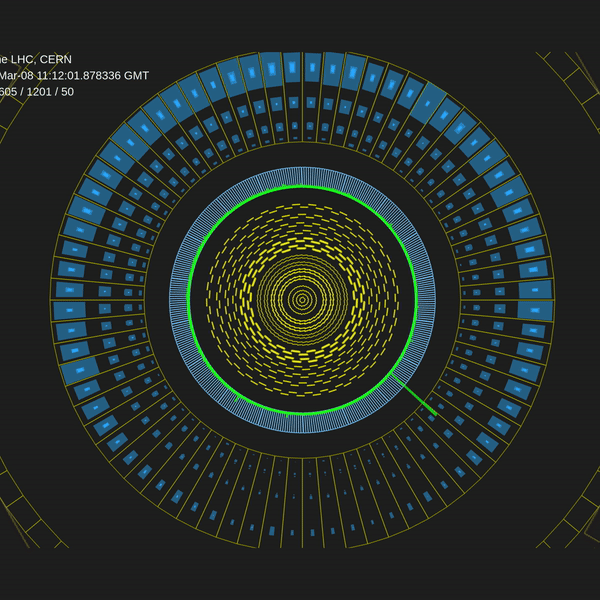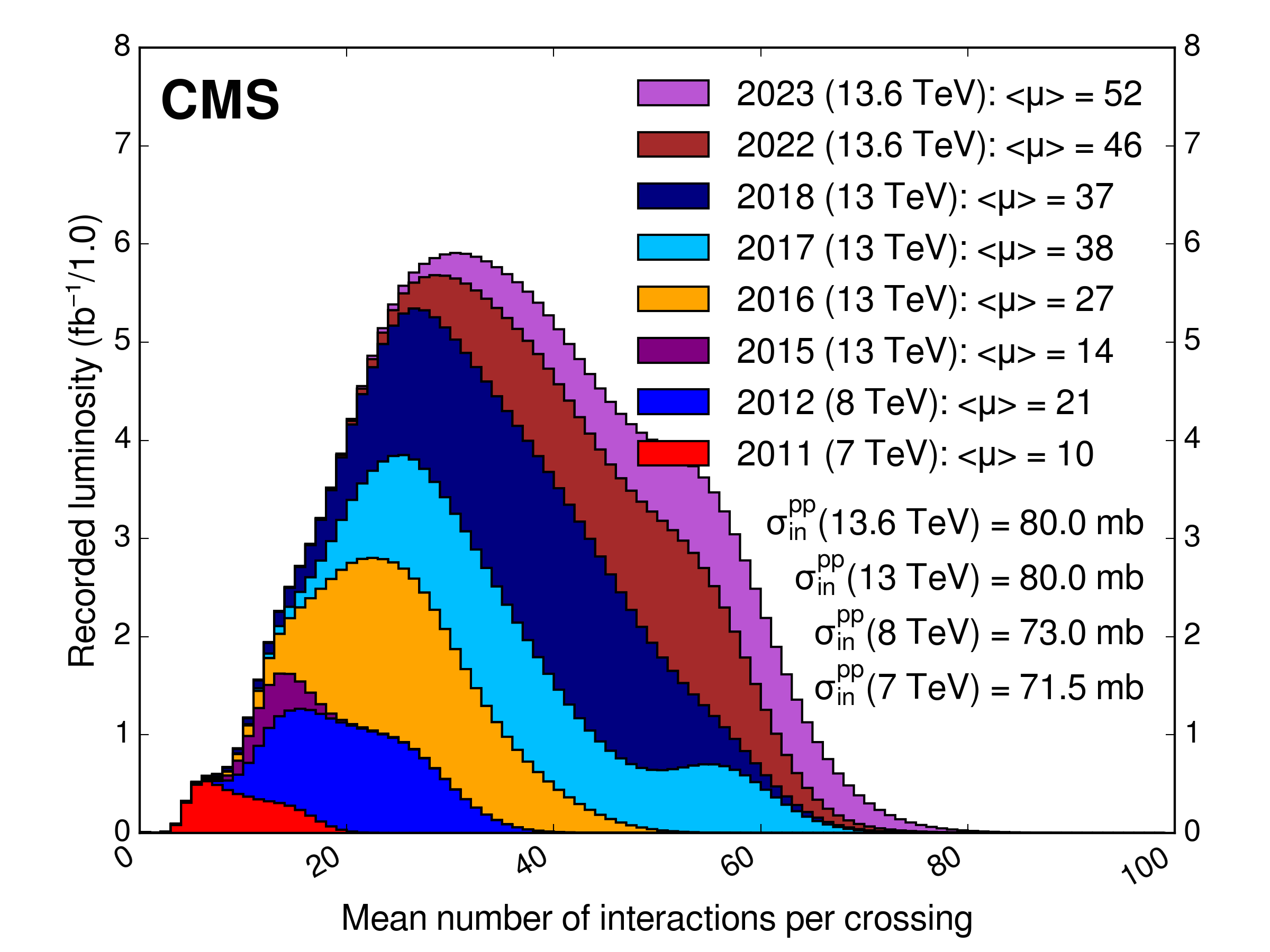
In this short series, we look at the different types of tests and steps needed for CMS to run at the precision the experiment requires.
Part 2
First Beam Arrives
So far, the only tests and alignments that have taken place have relied on the muons sent by the universe. In parallel, the teams at the LHC conduct their own tests. Once these are complete, the first beam of protons can start circulating! The beams are made up of bunches of protons, with each bunch containing more than 100 billion protons.
This starts with very few bunches of protons, around three in each direction, injected into the beam pipe without colliding at all, and over the following weeks, more bunches are added until reaching the maximum number of 2400 bunches. This means there are 2400 bunches traveling in one direction around the ring and 2400 traveling in the opposite direction, ready to collide.
Beam Halos
A little quirk of the first beams are the beam halos. There is a tiny amount of gas left in the LHC tube in otherwise vacuum conditions - actually, it is more of a perfect vacuum than outer space, but still, there are some minuscule amounts of gasses left over. As the first bunches of protons travel along the LHC beampipe, they come across these small amounts of gas and create a halo effect in the detector, a little bit of background noise. These can happen at any point along the LHC, not necessarily in the detector, but when they do, we detect their effects.
Data Transfer
When everything is up and running, the amount of data being taken by CMS is huge - up to half a petabyte of data a day! This is the data that will feed into the physics analysis done by CMS scientists who study the outcomes of the proton collisions. However, before reaching this point, smaller amounts of data are transferred at this point to the data centres, termed Tier-0, through the processing and data certification procedures. This serves as a test of the data transfer, recording, and communication lines between the different teams. It is essential that this process is practiced and slick for when the full amount of data for physics analysis has to go through the same steps.
Splash!
The LHC can create what we call splash events! Collimators, made of tungsten or graphite, create a physical barrier in the beam's path. The proton bunches travel around the detector normally, then crash against the barriers, causing particles to spread out from the impact. The only ones that continue far enough to go into the CMS detector are the muons.
Now these muons all come from the same event so we know their direction and the time of the crash, therefore we can see them all coming through our sub-detectors together. They are used to align the sub-detectors temporally. For example, if different crystals of the electromagnetic calorimeter that are located at the same Z position are saying that the spray of muons comes through at x time and another at x+delta then we know to realign them all together in time. Just like syncing watches before a mission!

These are also incredibly helpful to calibrate the energy readings, because the singular cosmic muons that pass through the detector sometimes may not have enough energy to register very strongly. Take the ECAL for example, the electromagnetic calorimeter, which measures the energy of the particles. In a splash event, there are ten, twenty, or thirty muons all passing through, making it a much clearer signal to work from to calibrate energy readings. So for example, if the detector is saying that the energy of the muon is 10.1 GeV when we already know it should be 10, the detector can then be calibrated by the 10% that it was off.
Injection Energy Stable Collisions
Beamtime! The first collisions happen at the injection energy of 900 GeV (Giga Electron Volts). What that means is that there is one bunch of protons at 450GeV and another going in the opposite direction at 450 GeV, so the collision is the sum of those energies at 900 GeV. The protons are not accelerated further in the LHC for this stage, but instead are kept at the same energy they were injected into the LHC with.
Fine-tuning the Beam Spot
This moment is really useful for CMS to check that the Beam Spot is in the right place. The Beam Spot is the physical point where the collisions happen inside the beam pipe.
Horizontally, this Beam Spot should be central, as the detector should be equally exposed to the results of the collision on each side. If it were unbalanced, then there is a risk that one side portion of the detector becomes overused and deteriorates quicker than the other.
In the vertical plane, though, the Beam Spot is more complex; it is designed to be a little de-centred because of Archimedes’ principle. Believe it or not, the whole experimental cavern and the LHC tunnel itslef is buoyant and tends to rise - not by much, by incredibly minuscule amounts, but the detectors are so sensitive that they can pick up on this. It is as if the LHC were a balloon which has been put underwater, and the earth itself is acting like a very dense liquid: it wants to rise over time! Therefore vertically, we see the beam spot to be slightly lower than the centre so that as it rises over the course of Run 3 all the parts of the detector are equally used.
Full PileUp
Pileup is the term used for the number of simultaneous proton collisions happening when two bunches collide. For example, in Run 1 there was a pileup of 7, meaning that each time two bunches of protons met there were 7 actual proton collisions. In Run 2 there were around 30, and in Run 3 we have increased this to 64. To see the pileup in different periods from Run 1 to Run 3 check this page out.

Trigger Testing
It is important to reach these as quickly as possible as not all the trigger systems are linear! Those that are, with 60 collisions could read out 60 Hertz, and 70 would have a readout of 70 Hertz. But for the non-linear sections, 60 may read out 60 Hz, but 70 may read out something like 120 Hz. Therefore to fully test the needed readouts the full pileup is needed.
By 300 bunches, the pileup is already at 64, allowing this fine-tuning to be done.

